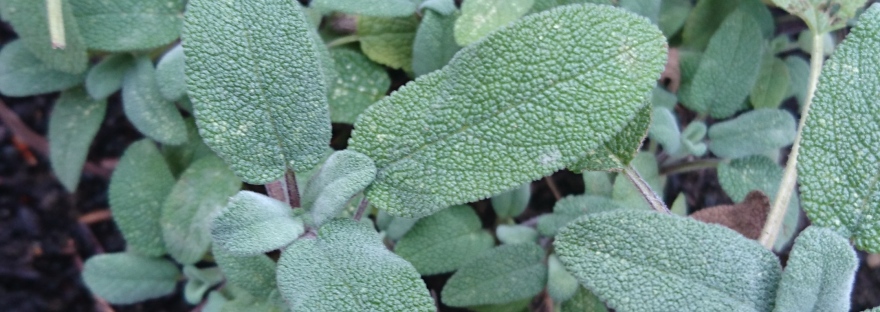Onto another aromatic herb native to the Mediterranean, and now commonly grown in the garden; common Sage. The name of this plant’s genus ‘Salvia’ comes from the Latin ‘Salvare’ meaning ‘to save, or to heal.’ The plant has long been used medicinally with examples from Ancient Greece and Rome and throughout the Middle Ages where it was commonly grown around monasteries for its healing properties.
Even its culinary uses; teaming sage with rich foods (in particular meats) hint at its medicinal properties. Helping the digestion of rich foods, Sage is a tonic for the liver and aids with indigestion, bloating and flatulence.
Rich with antioxidants, the anti-inflammatory and antiseptic properties of a Sage tea or gargle can be soothing for sore gums, mouth ulcers and sore throats. Its antibacterial properties have been shown to be effective at reducing plaque build up too. Teamed with Rosemary and/or Thyme they can be supportive allies for coughs and colds and make a clearing steam for airways.
Modern research has found Sage to be stimulating for cognitive function too. Compounds within common Sage have been shown to inhibit enzymes that breakdown neurotransmitters in the brain and research is ongoing into the support this may provide for individuals with Alzheimer’s.
Traditionally sage has been used to help alleviate some menopausal symptoms such as excess sweating and hot flushes.
Ways to enjoy Sage
- As a culinary herb Sage can be added to meals to support the digestion of rich foods.
- Sage tea is an easy way to enjoy its many benefits. Steep a teaspoon of dried Sage or a few fresh leaves in boiling water, cover and enjoy after around 10 minutes. Team with Rosemary for memory and Thyme for soothing sore throats.
- Cooled tea can be used as a gargle for sore throats, mouth ulcers or gum problems. You may also wish to add a tablespoon of Apple Cider Vinegar into your gargle too for extra support. A fresh leaf can also be rubbed directly onto a sore tooth or gum.
- Dried Sage is an excellent herb to burn for its cleansing properties. Using either single leaves in a fireproof dish or combing the leaves into a stick, burning Sage has long been a popular method for receiving its antimicrobial benefits.


We always love to hear your favourite uses for herbs too, please feel free to leave us a comment.
When working with any plants it is important to do your own research to ensure they work for you. Sage is not recommended during pregnancy or for individuals with epilepsy. It is also toxic in very high doses.


1 thought on “Sage”